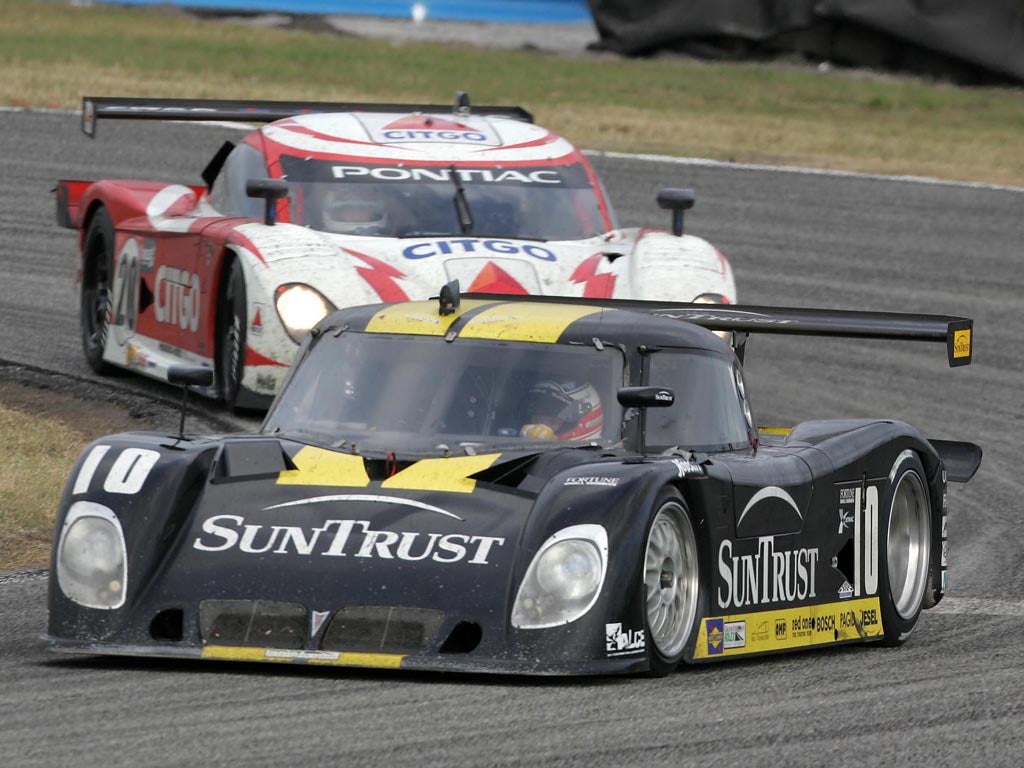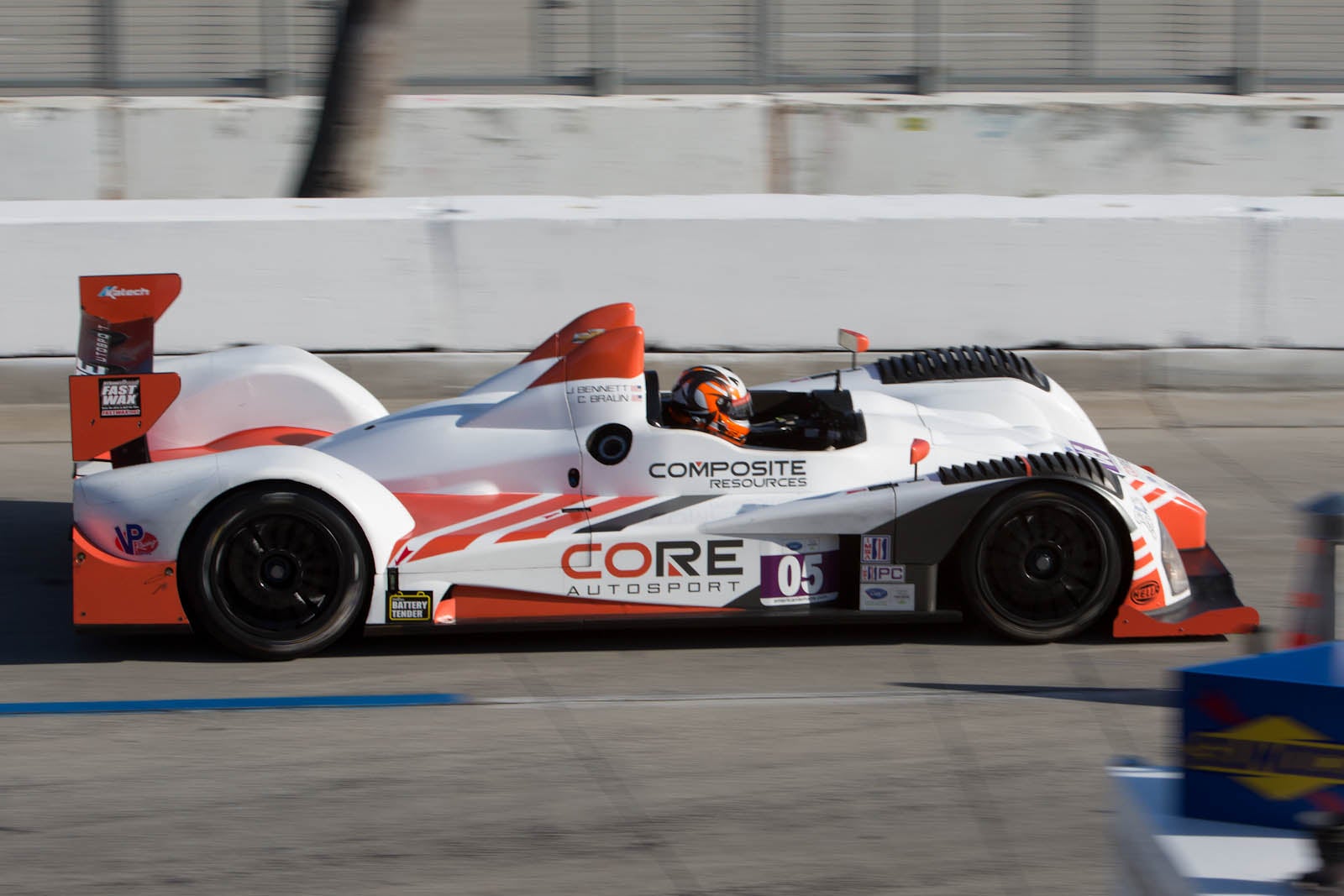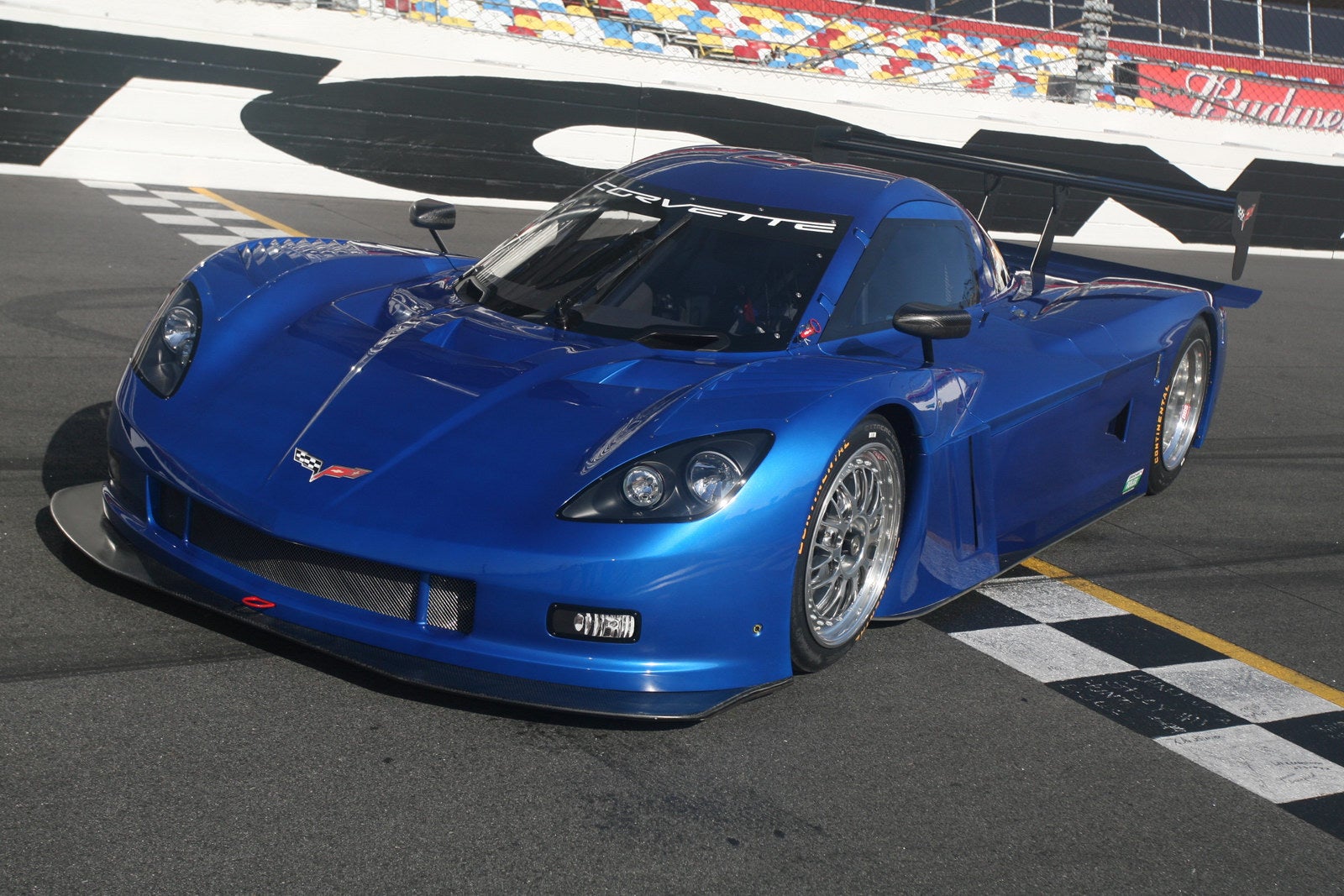 "Spaze" (spazegun2213)
"Spaze" (spazegun2213)
02/03/2014 at 11:51 • Filed to: IMSA, TUDOR, prototype, Racing, soap opera
 3
3
 16
16
 "Spaze" (spazegun2213)
"Spaze" (spazegun2213)
02/03/2014 at 11:51 • Filed to: IMSA, TUDOR, prototype, Racing, soap opera |  3 3
|  16 16 |
After !!!error: Indecipherable SUB-paragraph formatting!!! , I started doing a little research into various prototype classes sanctioned by IMSA/ALMS and Grand Am, which are now united under the all new TUDOR banner. However, a quick history of the soap opera that is sports car racing in the US is needed.
!!! UNKNOWN CONTENT TYPE !!!

In the beginning, there was the United States Road Racing Championship, started in 1962, which was quickly abandoned in 1968 because of the popularity of the Can-Am series. This name was resurrected by the SCCA in 1998 by a few people that split off from IMSA. This group grew increasingly displeased as rules for racing were set by the ACO and not a sanctioning body in America. A year later, after some teething issues, the series had the full backing and support from the France family. The new Grand American Road Racing Association (GARRA) ushered in an entirely new breed of prototypes, the very " 'Murican" Daytona Prototype (DP). Their foray into the series 2003 shocked a lot of the racing community, because GARRA did away with its old Sports Racing Prototypes (SRP) I and II classes. These SRP machines were lightly, if at all, modified FIA prototypes that were terrorizing the race tracks of Europe. While the real reason for the drastic change is not entirely obvious, there was lots of talk about the speed of the SRP machines not being suited to the tight US circuits. Additionally, there was the case for the skyrocketing cost of racing and developing these prototypes. The bottom line is, by the end of 2003, GARRA was not looking back as it stood behind their DP's.
I remember watching these bulbous beasts lumber around the tracks and thinking they sounded great, but were very slow. This first generation (2003-2007) of DP's witnessed its peak number of chassis manufacturers, seven, and were sometimes not much faster than the GT cars. Being a "spec" class allowed for serious cost savings with the purchase price initially being just under a half million. This, coupled with other cost savings measures like limiting aero and other technology, meant that running a DP for a year shouldn't drastically dent the team's already large pocket book. The second generation of DP's (2008-2011) built on the success of the first with six chassis manufacturers due to chassis buy outs. While this series was still a "spec" class, the teams had the ability to pick and choose a builder as they pleased. However, this all changed in 2012 with the third generation of cars and the series needing to "brand" them as Fords or Corvettes. This change made the bodywork on the chassis nearly identical, making it impossible for the fan to differentiate chassis between teams. This signaled the death of the DP class, as branding a prototype as a street car, or trying to, is unfathomable.
On the other side of this twisted love story is the IMSA GT Championship. The IMSA GT Championship started in 1969. The first race was held at Virginia International Raceway in 1971 and has over the years held some epic races. Over the next few decades, the organization would have many owners. Then in 2001 the series would be purchased by Don Panoz, who had already been approved to run ALMS from IMSA since 1999. With the purchase, he renamed the organization to IMSA, and it became the official sanctioning body for ALMS. From then on, ALMS was a forced to be reckoned with, even holding races in Europe and Australia. With the increasing cost of developing and racing an LMP I and II machines, a spec class was started.

In 2009, ALMS included the Le Mans Prototype Challenge (LMPC) class. The LMPC class would use a spec package consisting of the Oreca FLM09 chassis and the Chevrolet LS-3 motor coupled to an Xtrac 6 speed sequential. Paired with gentlemen driver rules, the series allowed for cost controlled prototype racing in ALMS. This class came to life and the entry list grew as the LMP1 class started to shrivel and die. Then on September 5, 2012, the series officially announced a full merge with GARRA to form the TUDOR series with IMSA as the sanctioning body.

For someone that had not been following American sports car racing's very own soap opera, this merger is a good thing. The IRL/CART style rift between the series is now gone, allowing for the uniting of fans and sponsors alike. However, a problem exists with this new formula in that there are too many spec prototype classes. TUDOR has a Prototype class that fields DP's, LMP2 cars, and the DeltaWing. Additionally, there is the Prototype Challenge class that carried over from ALMS LPMC cars. To illustrate the problem, I've organized a variety of specifications below.
!!! UNKNOWN CONTENT TYPE !!!
There are three different types of cars with nearly identical specifications. This small subset of specifications can't tell the whole story, but on paper, these cars look nearly identical. So should TUDOR kill off one of its prototype's? I think we can all admit that now that American sports car racing is united, the France family can do what they want. I'll admit that I'd love to be the first to drive a steak into the DP's hearts as it's the only prototype that is not raced outside the US. That being said, TUDOR is a US based series, with teams, fans, and racing all centered in the US. What do you think?
 Z_Stig
> Spaze
Z_Stig
> Spaze
02/03/2014 at 12:06 |
|
Kill the DPs. Please, kill them all. They served a purpose for a while, but there is no place anywhere else in the world for them, they are old, slow, and kind of stupid looking to me.
On a side note, I wonder if Memo Gidley would have fared better in a LMP2 car with better saftey features than a DP.
 Spaze
> Z_Stig
Spaze
> Z_Stig
02/03/2014 at 12:10 |
|
They are not "slow" anymore. At daytona they were the fastest car by a good margin. The LMP2's were WAY slower, even trimmed out in their Le Mans aero specs.
That is a good question about Memo....
 mambochapchap
> Spaze
mambochapchap
> Spaze
02/03/2014 at 12:17 |
|
DPs obviously are outdated and need to go. BUT, the cost of going racing with other alternatives leaves a lot to be desired. It is difficult to say if the sponsors that currently adorn the DPs would have made their forays into racing with an LMP1/2 based team. Chances are not. The struggle will remain to engage both the sponsors and the fans equally. Sports car racing as a brand has its better days ahead if managed well.
 Z_Stig
> Spaze
Z_Stig
> Spaze
02/03/2014 at 12:19 |
|
Daytona is anomaly on the schedule, and DPs have always had higher top speeds. Also, all the DP teams have much more data on Daytona then any P2 team because P2s had never raced there before.
Finally, don't forget the P2s are running the Conti spec tire, the compound which is optimized for the heavier DPs.
 Spaze
> mambochapchap
Spaze
> mambochapchap
02/03/2014 at 12:21 |
|
I don't think anyone can challenge how successful the France family has been managing Grand-Am or NASCAR. Both serious have done well for themselves so I think TUDOR will be in good hands. That being said, I hope I'm not the only one that sees that there are 2 spec prototype classes and some odds and ends in there. They might need to do a little trimming of the fat if LMP2 cars are not going to be very competitive.
 Spaze
> Z_Stig
Spaze
> Z_Stig
02/03/2014 at 12:24 |
|
Scott Sharp was talking about the tire being the biggest problem while being interviewed. I'm sure it will take the P2 teams some time to figure the tires out, but it shocks me a little that there was SUCH a speed disparity between the DP's and P2's, but that is what another ~150hp will do on a straight that long.
 Bad Idea Hat
> Spaze
Bad Idea Hat
> Spaze
02/03/2014 at 12:30 |
|
What a lot of people forget is that Group C and GTP were not the same, despite being similar. Group C had regulations in place requiring their cars to get a certain amount of gas mileage in a race. I'm not sure about chassis weights and engine displacement. GTP was almost anything goes. Displacement was tied to weight, and there were much more stringent safety rules (see Porsche 962), but there wasn't a whole lot after that. You had cars with miniscule 2.5L turbos going up against 7.0L behemoths, and competing equally. Manufacturer support was both the lifeblood and eventual demise of the class.
What needs to happen is a hybrid spec/open class. Starting with the engine, make it a mandatory production-built engine. Teams could take the engine and modify it for racing, but have to keep the major components like the block, heads, fuel injection system, etc. It has to look like an engine you could put in your car, basically. No hand-building engines using special parts made to look like a stock engine (looking at you, Toyota).
For the chassis, have one manufacturer make the tub and everything below the body. Teams can modify this within a moderately limited scope, mainly to fit engines into it and bodywork over it. The chassis design would have to preclude the ability to have crazy aero, but still allow some semblance of modification. Of course, also allow a standard aero package for low-budget teams (replacing the LMPC class in a way).
 Z_Stig
> Spaze
Z_Stig
> Spaze
02/03/2014 at 12:31 |
|
I wouldn't say Grand-Am has been wildly successful. I think for COTA last year, Grand-Am drew a two-day crowd of no more than 30 thousand.
I'm still worried for TUSSC. Either Sebring will allay some of our fears, our confirm thim.
 Z_Stig
> Spaze
Z_Stig
> Spaze
02/03/2014 at 12:34 |
|
Exactly. I wish they would let the teams pick their own tire suppliers.
 mambochapchap
> Spaze
mambochapchap
> Spaze
02/03/2014 at 12:42 |
|
You are right about the 2 spec classes. Spec racing is good for the business side of racing (lower costs, closer racing) but most sports car racing fans I know of are looking for close racing but still want to see technology and an eclectic mix of machinery. It makes it easier to be a fan. If you ask me, I think the mid-prototype range (LMP2 LMPC, DP et.al) is defunct to the fan in today's world, though they make a great way for competitors to make it to the race track. LMP1 is great for the fans but terrible from a business standpoint. I believe the future truly lies in the GT categories....I know we tried GT based prototypes in the past and for some reason that I cant recall it didn't work (?), but I would prefer that infinitely compared to having to watch an Oreca Prototype getting mugged by a GTLM car...it doesn't even make sense.
 Spaze
> Bad Idea Hat
Spaze
> Bad Idea Hat
02/03/2014 at 12:43 |
|
The Group C and GTP class differences sound interesting. Looks like I'll have to do more research into things like that. But support from manufactures and sponsors does have an ebb and flow to it.
Your thoughts on a street engine in a spec chassis sounds EXACTLY like LMPC. Its a crate LS-3 motor in a spec chassis. Sure teams cant modify the aero, but that helps keep costs down (which I'm ok with).
 Bad Idea Hat
> Spaze
Bad Idea Hat
> Spaze
02/03/2014 at 13:10 |
|
I'm talking about using any engine, provided it meets some sort of homologation requirements, and isn't prone to exploding at the first sign of abuse. If you want to use an Ecotec engine, great. LS? Sure! Detroit Diesel 60? You're effing insane, but what the hell!
Actually, at some point displacement(HP/L estimations required) to weight ratio regs would disallow using monstrous engines. I think IMSA limited to 7L engines in GTP cars, and that was to allow the LS OHV engines in.
Mulsanne's Corner has a few years of IMSA GTP/Lights regulations. I've made an attempt to convert them to present day rules using Automation as a simulation vessel. It's mostly Swahili to me, unfortunately. I'd love to be able to put some sample regs to paper just for the ol' giggles.
 King Ginger, not writing for Business Insider
> Spaze
King Ginger, not writing for Business Insider
> Spaze
02/03/2014 at 22:49 |
|
I personally don't care much for prototypes, spec cars, or series that exist on only the most shoestring of budgets while diluting the pool of drivers, racing fans, TV contracts, and advertisers. I guess I just don't see the value from an economics or engineering standpoint to the continued use of DP or LMP2 in general. TUDOR would have been much better served simply being a feeder for GTLM class vehicles.
 Spaze
> King Ginger, not writing for Business Insider
Spaze
> King Ginger, not writing for Business Insider
02/04/2014 at 10:52 |
|
I'm not sure about that honestly. There is the Porsche cup in IMSA and Conti Challenge which are supposed to be feeder series. I do think there should be some other form of racing than just "street cars" which is why I proposed bringing back Homologation specials. I'd love to see a series that pit the McLaren P1 against the 918 against the LaFerrari, etc.
 d3v
> Spaze
d3v
> Spaze
02/11/2014 at 22:55 |
|
Wait, aren't they supposedly coming up with regs for 2016(?) that will basically unite DPs and LMP2s, or something like that?
 Hot Takes Salesman
> Spaze
Hot Takes Salesman
> Spaze
05/08/2015 at 21:45 |
|
What if they just let the DP’s die as is planned for 2016-17-ish and just replace them with the glory that is LMP1-H?